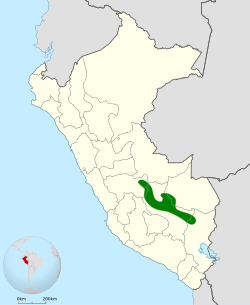| Parodi's hemispingus | |
|---|---|
 | |
| Scientific classification | |
| Kingdom: | Animalia |
| Phylum: | Chordata |
| Class: | Aves |
| Order: | Passeriformes |
| Family: | Thraupidae |
| Genus: | Kleinothraupis |
| Species: | K. parodii |
| Binomial name | |
| Kleinothraupis parodii | |
 | |
Parodi's hemispingus (Kleinothraupis parodii) is a species of bird in the family Thraupidae, endemic to Peru.
Its natural habitat is subtropical or tropical moist montane forests.
